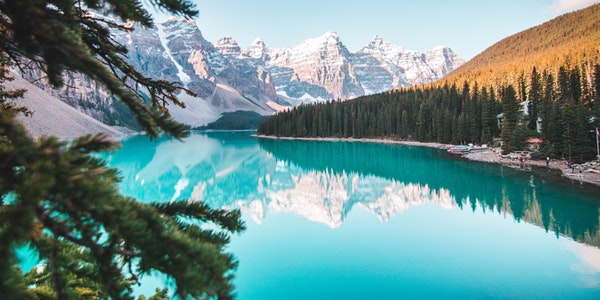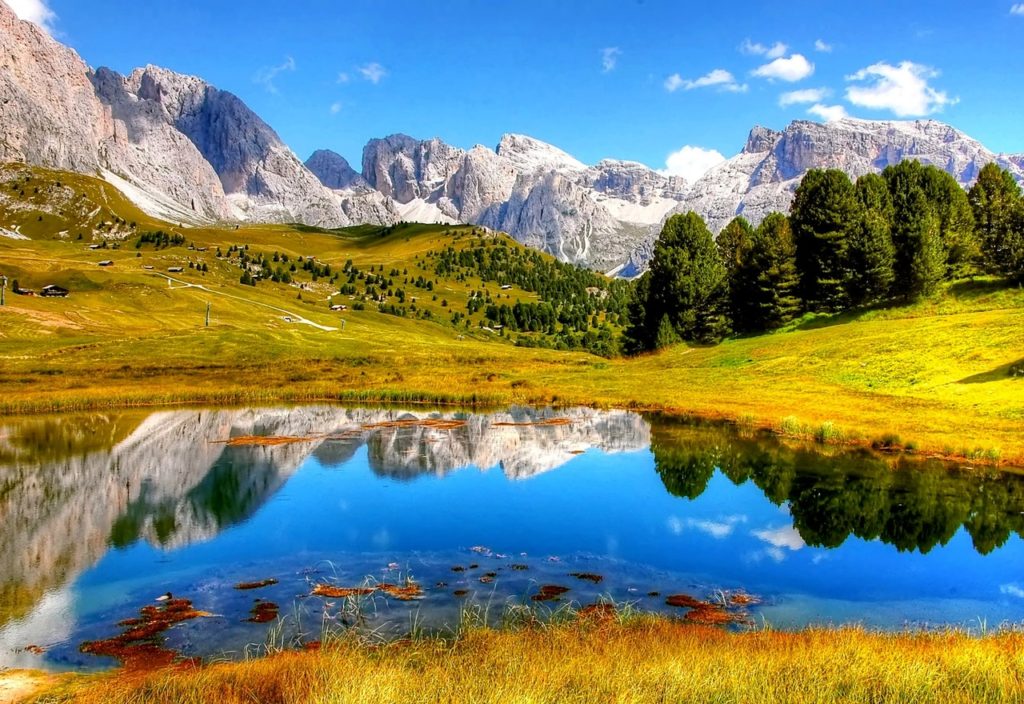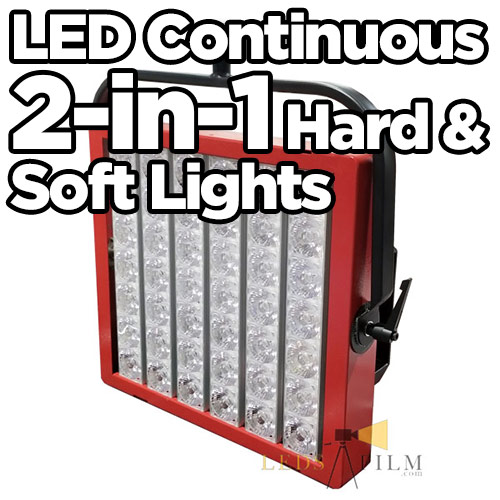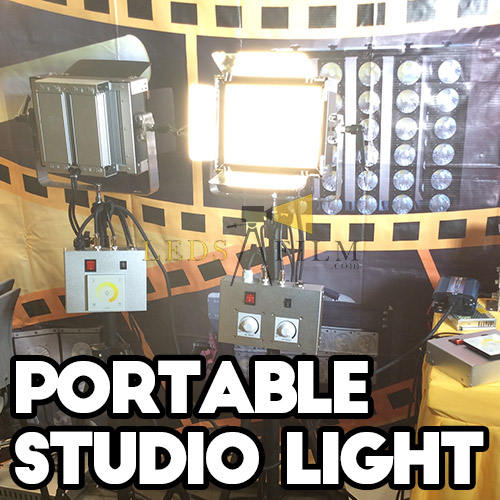Table of Contents
Depth of Field and Shutter Speed
All field photography will have some compromises. The aperture and shutter combination you use when shooting must be determined based on many practical conditions: Are you shooting a still landscape or a running animal? Is the subject shaking due to the wind? What is the focal length or magnification of the lens you are using? How sharp or soft do you want your photos to be in the end?
There is no suitable answer that can solve all the above problems at the same time. You must choose the appropriate steps to shoot according to your final expectations of the photo.
The first decision you should make is what shutter and aperture combination you should choose. Do you need to shoot moving moments (using a fast shutter and a large aperture) or do you need to use a large depth of field to shoot (through the use of a small aperture and slow door opening)? “Depth of field” refers to an area that is sharply imaged near the focal point in a photo.
In theory, there is only one plane of any subject that is in the best focus position: the plane where the lens focus is located. But in fact, clear and sharp imaging can still be obtained in a certain range on both sides of the focal plane. When it exceeds this relatively sharp range, no matter which side of the focal plane, the sharpness of the image will decrease.
The Factors That Determine the Depth of Field
The actual size of this sharp imaging area, that is, the “depth of field”, is determined by four factors:
*The actual aperture size when shooting
*The focal length of the lens used
*The size of the subject
*The distance between the camera and the subject
Let’s take a look at how these four factors affect the depth of field.
For all lenses, when the aperture is reduced, the depth of field increases. Conversely, when the aperture is opened, the depth of field will decrease. On the same lens, relative to f/2, f/2.8 and f/4, setting the aperture to f/16, f/22 and f/32 can achieve the maximum depth of field. The smaller the aperture of the aperture, the greater the depth of field. The larger the aperture, the smaller the depth of field.
If you repeatedly shoot the same object at the same place, no matter which f-number is given, when the focal length of the lens increases, the depth of field will decrease, and vice versa.
For example, if you change a 28mm wide-angle lens to a 200mm medium-focus lens, even if you use the same f-number on the medium-focus lens as the wide-angle lens, you will still get a much smaller depth of field than the wide-angle lens.
When changing the lens, the size of the subject in the photo will also change. Because the shooting position is not changed, the perspective effect of the photo has not changed, but because a longer focal length lens is used, a larger subject can be seen in the viewfinder.
Now through the viewfinder, you will see fewer scenes than when using a wide-angle lens, but at this time you lose the original depth of field. Simply put, in order to obtain magnification, the depth of field is lost.
Aperture Size and Depth of Field
For any certain lens and certain f-number of aperture, when the distance from the lens to the subject is shortened, the depth of field is also reduced at the same time.
When you get closer and closer to the subject, you will see a smaller scene through the lens. We assume that you are photographing trees and flowers on the hillside. You can use any lens to shoot. Suppose we shoot with a 35-70mm zoom lens at the 70mm end and f/16. At this time, the depth of field is about a few hundred yards.
Now we move the position closer, so that we still shoot a single tree at 70mm and f/16. Now the depth of field will be measured in feet (1 yard = 3 feet = 0.9144 meters). Let’s move closer so that we can use 70mm and f/16 to photograph a branch of that tree, and the depth of field should be calculated in inches.
Keep getting closer. When we shoot a flower under a tree with the same focal length and aperture, the depth of field at this time will be measured by a fraction of an inch. Once again, we have lost the depth of field in order to obtain a larger image.
The Focal Length and Depth of Field of the Lens
However, if the image size of the subject is kept unchanged, no matter what lens is used, as long as the aperture size is the same, the same depth of field will be obtained.
Perhaps you have heard a saying that a wide-angle lens has a larger depth of field, and a telescope lens has a smaller depth of field. This statement is not entirely accurate. When the shooting position remains the same, the wide-angle lens can shoot a wider angle of view than the telescope lens, and the telescope lens can only shoot part of it. This is what was said in the second point above.
But when the picture of the subject remains the same, all the lenses produce the same depth of field under the same f value. Take a photo with a 50mm lens, and then back 4 times the distance from the lens to the subject. At this time, you can use a 200mm lens to shoot the subject in the same frame (at this time, the focal length is 4 times that of 50mm).
If the aperture settings of the two lenses are the same, the depth of field of the two photos will be the same. If you step back twice the distance, use a 400mm lens and the same aperture value, you can also take pictures with the same depth of field. If you stand at the position where the photo was taken with a 50mm lens, walk forward half the distance, use a 25mm lens and the same aperture, the depth of field remains the same.
These photos will look very different, because the background format is different due to the different angle of view of the lens, and the perspective effect is also different, but the depth of field in all photos is the same.
Depth of Field and Shutter Speed
Now we return to the original question: do you need a large depth of field or a high shutter speed? In many cases, the setting of the exposure parameters must be a compromise between the imaging results you want and the impact of the shooting environment.
Maybe you like to use f/22 to shoot landscapes, but the result is that you have to use a slower shutter, which blurs the grass that is blown by the wind. Or, you like to use a shutter of at least 1/500 second to capture the bird’s momentary movement, but the result is that only the bird’s head is in focus due to the small depth of field.
Compromise, compromise again…but a decision must be made after careful consideration. Generally speaking, when shooting landscapes, you need to select the appropriate aperture to obtain the appropriate depth of field, and then determine the corresponding shutter speed. Therefore, landscape photography can be regarded as an aperture priority situation. For shooting animals, you need to select the required shutter speed first, and then determine the aperture size. Therefore, animal photography needs to use a shutter-first thinking method.
Shutter Speed and Aperture Size
No single shutter speed or aperture size can be suitable for all shooting situations. I have heard that some photographers advocate always using the smallest aperture of the lens to shoot landscapes because the maximum depth of field can be obtained. But I strongly disagree with this view. Choose the appropriate aperture f value according to the depth of field you want.
No matter when, there is no need to reduce the aperture to or even exceed your needs. If the depth of field produced by the exposure value of 1/60 second and f/11 can meet your needs, continuing to shrink the aperture to f/32 will increase the possibility of blurring the photo. Such as slight shaking of the camera or the subject, etc.
In fact, usually for any lens, as long as the aperture value is reduced by two stops than the maximum aperture of the lens, the sharpest image can be obtained. But if this aperture can’t produce the depth of field you need, then why do you need it? Using modern lenses and negatives, you can actually get the imaging results you want at any f-number. When discussing how to make photos clearer, using a stable tripod is more useful than shrinking the aperture.
Depth of Field Preview
Although the digital camera can quickly see the shooting results, due to the lack of accuracy of the LCD display, I still hope to “see” the effect of depth of field before shooting.
Under normal circumstances, when viewing through the viewfinder, no matter what the actual aperture you set, what we see is the depth of field effect at the maximum aperture (Note: This only applies to SLR cameras, rangefinder cameras are not To the depth of field effect).
This can be misleading. Therefore, for a serious photographer, I would not buy any camera without the “depth of field preview” function (you can see the depth of field effect after the aperture is contracted through the lens). This is very important to me because I want to be able to see what the final imaging result is. I also want to be able to see the depth of field effect to choose the right aperture, and I want to control the entire photography process.
(To Be Continued)
